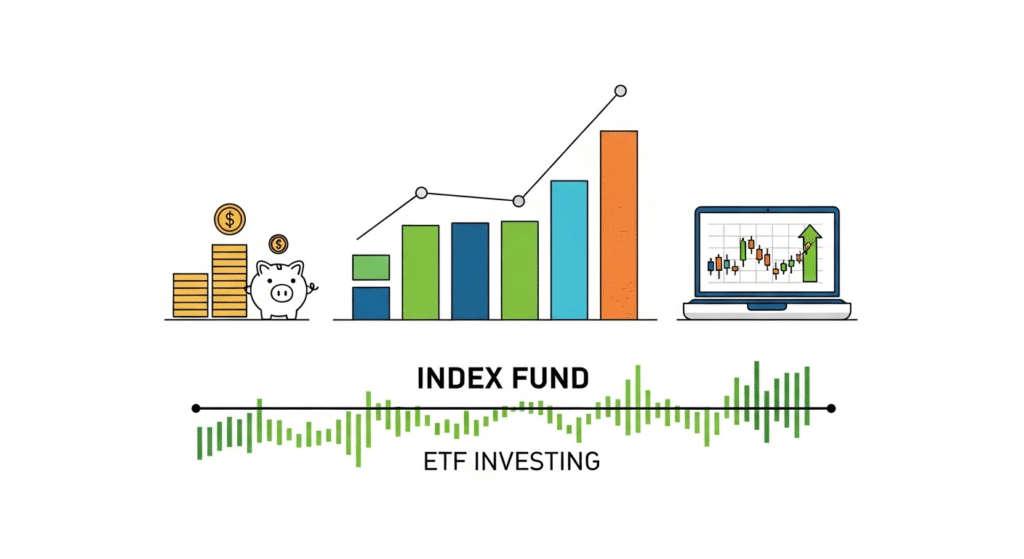
Stock Market Exchange plays a vital role in helping individuals and businesses grow their wealth through buying and selling company shares. It connects investors with organizations looking to raise capital, creating opportunities for financial growth. Consistent returns in the stock market exchange are essential for long-term financial success. Instead of chasing quick profits, smart investors focus on stable and steady gains over time.
To achieve this, strategy, patience, and research are key. Understanding market trends, company performance, and risk management helps investors make informed decisions. In this guide, we’ll explore five proven stock market exchange strategies designed to help both beginners and experienced investors achieve consistent and sustainable growth.
Strategy 1: Value Investing
Value investing is one of the most reliable approaches in the Stock Market Exchange. It focuses on identifying stocks that are undervalued compared to their actual worth. These companies often have solid fundamentals, stable earnings, and strong management but are temporarily trading at lower prices due to market fluctuations or investor sentiment. By purchasing undervalued stocks and holding them long term, investors can profit when the market recognizes their true value.
The key to successful value investing in the Stock Market Exchange lies in careful analysis. Investors study financial statements, company history, and industry performance to find quality stocks at a discount. Ratios like the Price-to-Earnings (P/E) and Price-to-Book (P/B) are vital indicators. A low P/E ratio may suggest a stock is undervalued, while a low P/B ratio can indicate that the company’s market value is below its book value.
Value investing requires patience and a long-term mindset. Instead of reacting to short-term price changes, investors wait for their holdings to grow steadily over time. This method reduces risk compared to speculative trading and often provides stable, compounding returns. Many successful investors, including Warren Buffett, have built their fortunes using this approach.
Strategy 2: Growth Investing
Growth investing is another popular approach in the Stock Market Exchange, focusing on companies that are expanding rapidly in revenue, market share, or innovation. These firms are often in emerging sectors like technology, healthcare, or renewable energy. Investors buy shares early, expecting the company’s value to rise significantly over time. Though growth stocks may not pay dividends, they usually offer substantial capital appreciation potential.
The key to growth investing in the Stock Market Exchange is identifying businesses with strong financial health and future potential. Investors look for rising earnings, expanding customer bases, and new product developments. A company’s revenue growth rate, profit margins, and leadership vision are strong indicators of success. Since these stocks can be more volatile, understanding risk versus reward is crucial for long-term stability.
Beginners can start by researching industries with future potential and monitoring companies that consistently outperform competitors. Diversification is also essential, as spreading investments across different growth sectors helps reduce volatility. This approach balances opportunities and minimizes risks associated with market fluctuations.
Strategy 3: Dividend Investing

Dividend investing is a stable and rewarding strategy in the Stock Market Exchange, perfect for investors seeking regular income and long-term growth. This approach focuses on companies that share a portion of their profits with shareholders through dividend payments. These dividend-paying firms are often well-established and financially sound, offering a dependable source of income even during market volatility.
In the Stock Market Exchange, dividend investors prioritize businesses with a proven track record of consistent payouts. Companies in sectors like utilities, banking, and consumer goods are often reliable choices. The dividend yield and payout ratio are key factors to consider — a higher yield indicates better returns, while a healthy payout ratio ensures sustainability.
A major advantage of dividend investing is compounding. By reinvesting dividends to purchase more shares, investors can accelerate their wealth growth. Over time, this creates a steady income stream and capital appreciation. Dividend stocks are also less volatile, making them suitable for conservative investors or those planning for retirement.
This strategy in the Stock Market Exchange rewards patience and stability. Investors benefit from both regular cash flow and potential stock price increases. By focusing on high-quality companies with reliable dividend histories, individuals can build financial security and achieve consistent returns. Dividend investing remains a time-tested method for long-term wealth creation and financial independence.
Strategy 4: Index Fund and ETF Investing

Index fund and ETF investing are among the easiest and most reliable ways to grow wealth in the Stock Market Exchange. This strategy is known as passive investing, meaning investors don’t pick individual stocks. Instead, they invest in funds that mirror the performance of a market index such as the NASDAQ, Dow Jones, or S&P 500. These funds automatically include top-performing companies, making them ideal for building steady, long-term returns with minimal effort.
The biggest advantage of investing in index funds and ETFs is diversification. Instead of relying on one or two companies, you own small portions of many, reducing risk. If one stock performs poorly, others in the index often balance it out. Additionally, these funds come with low fees because they don’t require active management by fund managers. Over time, this cost-saving can make a big difference in your total return from the Stock Market Exchange.
This strategy suits beginners and busy investors who prefer simplicity and consistency. You don’t need to spend hours analyzing charts or tracking individual stocks. Simply investing a fixed amount regularly can generate impressive compounding returns over time. Many investors use ETFs (Exchange-Traded Funds) because they’re easy to buy and sell like regular stocks while still offering index-level stability.
Strategy 5: Swing and Momentum Trading

Swing and momentum trading are active strategies in the Stock Market Exchange that focus on short- to medium-term price movements. Unlike long-term investing, this method involves identifying opportunities where a stock’s price is likely to move significantly within days or weeks. Traders use technical analysis, price charts, and trend indicators to spot when to enter or exit trades for maximum profit.
In the Stock Market Exchange, momentum traders rely on tools such as moving averages, RSI (Relative Strength Index), and MACD indicators. These help determine whether a stock’s price is gaining or losing momentum. Swing traders, on the other hand, focus on capturing profits during upward or downward “swings” in price. This requires quick decision-making and constant market observation.
Risk management is crucial in this strategy. Because trading in the Stock Market Exchange can be volatile, traders set stop-loss orders to limit potential losses. They also determine target prices for exiting profitable positions. Maintaining emotional control and sticking to a trading plan helps prevent costly mistakes caused by sudden market shifts.
Conclusion
Succeeding in the Stock Market Exchange requires the right balance of knowledge, patience, and consistency. Whether you prefer value investing, growth investing, dividend income, index funds, or trading strategies, each approach offers unique advantages. The key is choosing a method that aligns with your financial goals, risk tolerance, and time commitment. Focus on learning continuously, diversifying your investments, and maintaining discipline. Consistent returns don’t come overnight, they build through smart decisions and long-term planning. With dedication and the right strategy, the Stock Market Exchange can become a reliable path to financial growth and independence.
FAQs
How can beginners start investing in the Stock Market Exchange?
Beginners can start investing in the Stock Market Exchange by opening a brokerage account and learning the basics of trading. Start with small investments in stable companies or index funds to minimize risk. Understanding how the market works, setting financial goals, and staying consistent are key. Using mobile trading apps or demo accounts helps beginners gain experience safely before investing larger amounts. Always research before buying any stock.
What are the safest investment options in the Stock Market Exchange?
The safest investments in the Stock Market Exchange are usually index funds, ETFs, and dividend-paying stocks. These options provide diversification and steady growth with lower risk. Index funds mirror the performance of major exchanges like NASDAQ or S&P 500, offering stability over time. Dividend stocks, on the other hand, provide regular income and capital appreciation. Choosing reputable companies with consistent earnings history helps reduce losses and build long-term financial security.
How much money do I need to start investing in the Stock Market Exchange?
You don’t need a large amount to start investing in the Stock Market Exchange. Many online brokers allow investors to begin with as little as $10 or less through fractional shares. It’s better to start small and invest consistently rather than waiting to save a big amount. Over time, regular contributions and reinvested earnings help your portfolio grow. The key is consistency, patience, and understanding your risk tolerance before investing.
Is it better to trade or invest in the Stock Market Exchange?
Both trading and investing can be profitable in the Stock Market Exchange, but they suit different goals. Trading focuses on short-term price movements and quick profits, while investing aims for long-term growth through steady returns. Beginners should start with long-term investing, as it’s less risky and requires less time. Experienced individuals with good market knowledge can explore trading strategies carefully, balancing them with stable, long-term investments for consistent success.
How can I avoid losses in the Stock Market Exchange?
To avoid losses in the Stock Market Exchange, investors should diversify their portfolios, set stop-loss orders, and avoid emotional decisions. Researching before investing, following trusted strategies, and staying informed about market trends can reduce risk. Investing for the long term instead of chasing quick profits also minimizes losses. It’s wise to start small, learn gradually, and review your investment performance regularly. Patience and discipline are essential for consistent success.
